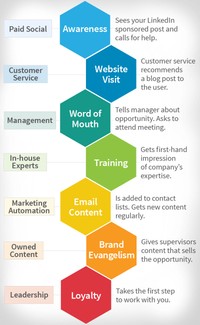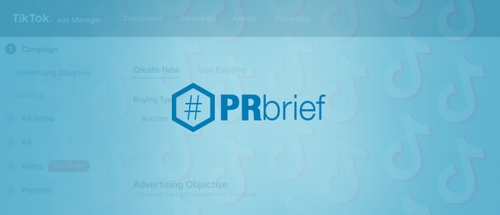It’s a digital world. And, within this wild landscape, data rules. From data collection to digital metrics, data is the talk of the town, providing valuable hard-and-fast information. However, data alone is not enough. In fact, data is just the beginning of a bigger story.
When used properly, data can clarify your marketing strategy. When you set up key performance indicators (KPIs) within your strategy (more on that below), they reveal insights that can guide you in achieving your business goals. In short, taking data and turning it into actionable insights helps you make better business decisions.
So, how do you transform raw data into action?
It starts with changing your thinking. You need to challenge yourself to think beyond baseline numbers. Consider this:
First time visitors to your website rarely convert to an immediate sale. People typically need to take time, do research, and interact with others before making a purchase decision. This is often called the “path to purchase” or “buyer’s journey.”
Along their path, people reach specific points that ultimately impact their decision to purchase. Ideally, each of these points should have a set of KPIs that shows success or offers opportunities for improvement. So, as visitors travel down the path, you’ll know if your marketing strategy is working.
Your thinking about KPIs needs to go beyond single data points (such as sessions or bounce rate). Instead, integrate several metrics that identify website visitor engagement, making sure they align with your specific marketing goals. If you don’t go beyond baseline numbers, data simply become vanity metrics that don’t truly reveal an impact or provide insight.
Once KPIs are set, it’s time to collect data.
When it comes to customized website visitor tracking, various platforms are reliable: Facebook Business, Google Analytics, HubSpot, and SharpSpring. Often, multiple platforms are required to get the right mix of data in this complex world of capabilities.
It’s important to keep in mind that while these programs collect and sort data to provide a performance overview, the information needs to be aggregated and analyzed. That requires a thinking human brain that understands strategy. It can’t be automatically generated or produced by a software system.
Let’s dig into a detailed example.
You created a new lead-generating landing page. Kudos to you. However, your data platform shows that you’re getting zero new leads, and the average bounce rate is 70 percent! Some people would stop there and conclude that the content is not relevant, the design is unengaging, or the call to action is weak. Some of those conclusions may be true, but you need to look deeper:
- Is a paid campaign driving the traffic (which typically generates a higher bounce rate)? If so, are you targeting the right audience?
- What do the individual traffic sources look like?
- Is the average being skewed by one specific traffic source that needs be addressed?
- Are visitors technically bouncing from the page, or are they staying long enough to engage with the on-page content but not ready to engage with your call to action?
- How does this content fit within the buyer’s journey?
- Do visitors need to be nurtured more before providing lead information?
That’s a lot of questions! And, the answers aren’t simple. In fact, you should ask yourself “Why?” again and again. Only then will you discover the real truth behind the data.
The key—utilizing data and analytics to formulate insights.
Insights are extremely valuable. They give businesses a holistic overview, telling you what efforts are, and are not, working.
Think of it as a 3-step process:
- Gather data and analytics based on goals and objectives
- Evaluate insights to continuously improve programs
- Modify tactics or test new digital strategies
And remember, the more you dig, the greater your understanding will be. When you have evidence that explains why a piece of content performed a certain way, your insight helps you make better, data-backed decisions next time.
“Data” doesn’t have to be a four-letter word.
It all comes down to leveraging data to obtain insights. Not only do insights validate the efficiency of the data-collection program, they guide your future strategic planning.
In today’s digital wild west, you should blaze a smooth, data-driven trail. Contact Element today to find out more about how we can turn simple numbers into meaningful points of conversation (and conversion) and, most importantly, great results.










